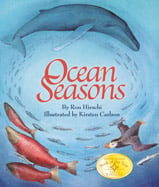Alignment to Standards for SD

| Grade | Number | Standard |
|---|---|---|
| 1 | SC-1.E.1.1. | changes in weather over time. (seasonal changes) |
| 1 | SC-1.L.2.1. | describe physical similarities and differences between parents and offspring. puppies/dogs & ducklings/ducks, etc. |
| 1 | SC-1.L.3.1. | Students are able to relate characteristics of plants and animals that allow them to live in specific habitats. |
| 1 | SS-1.G.1.3. | Identify a continent as a large land mass and an ocean as a large body of water. |
| 2 | SC-2.E.1.1. | describe types and patterns of weather during different seasons. |
| 2 | SC-2.E.1.2. | geological features using maps and globes. e.g. Locate mountains, plains, valleys, and bodies of water on a globe or map. |
| 2 | SC-2.E.1.2.a | Recognize most of the Earthês surface is covered with water. |
| 2 | SC-2.E.1.3. | recognize and distinguish between forms of water in the Earth system: snow, ice, fresh water, salt water |
| 2 | SC-2.L.1.2. | classify people and animals according to similarities and differences: Classify animals by color, size, shape, body parts, gender, and offspring.Carnivore/herbirvore? |
| 2 | SC-2.L.2.2. | Students are able to compare life cycles of various living things. |
| 2 | SC-2.L.3.1. | Students are able to describe ways that plants and animals depend on each other. (seed dispersal, nest, plants in food webs) |
| 2 | SC-2.L.3.2. | associate adaptations in plants and animals in response to seasonal changes. Animals that migrate, hibernate, use camouflage, or go dormant. |
| 3 | SC-3.E.1.2. | Describe how humans use Earthês natural resources, e.g. minerals for jewelry or trees for paper |
| 3 | SC-3.L.1.1. | identify the basic structures, functions, and needs of plants in relation to their environment: leaves, stems, roots, flowers |
| 3 | SC-3.L.1.1/2.a | Differentiate between plants and animals. |
| 3 | SC-3.L.1.2. | identify characteristic features of animals and their related functions in relation to their environment: wings/ hollow bones, webbed feet, fins |
| 3 | SC-3.L.1.3. | describe life cycles, including growth and metamorphosis, of familiar organisms. |
| 3 | SC-3.L.2.1. | animals instinctively meet basic needs in their environment: baby birds know to open their mouths for food; newborn turtles know to go to water, birds know how to build nests, |
| 3 | SC-3.L.3.1. | species depend on one another and on the environment for survival. |
| 3 | SC-3.L.3.2. | environments support a diversity of plants and animals. |
| 3 | SC-3.L.3.2.a | types of environments, e.g. deserts and what lives there |
| 4 | SC-4.L.2.1. | behavioral and structural adaptations that allow a plant or animal to survive in a particular environment. |
| 4 | SC-4.L.2.2. | a size of a population is dependent upon the available resources within its community. |
| 5 | SC-5.L.3.2. | the transfer of energy using an energy pyramid model: producer, consumer, decomposer, herbivore, carnivore, omnivore, predator _ prey |
| K | SC-K.E.1.1. | describe simple Earth patterns in daily life. E.g. weather observations, seasons, night and day |
| K | SC-K.L.1.1.b | Students are able to compare size and shape of living things. E.g. gather and sort a variety of leaves, order a variety of mammals from smallest to largest. |
| K | SC-K.L.2.0. | Recognize similarities and differences between animal offspring and their parents. |
| K | SC-K.P.1.2. | Students are able to identify water in its solid and liquid forms. |
| K | SC-K.P.1.2.a | Observe ice in the environment. |
| K | SC-K.P.1.2.b | Observe water in the environment. |
| K | SC-K.P.2.1. | Students are able identify things that move. |